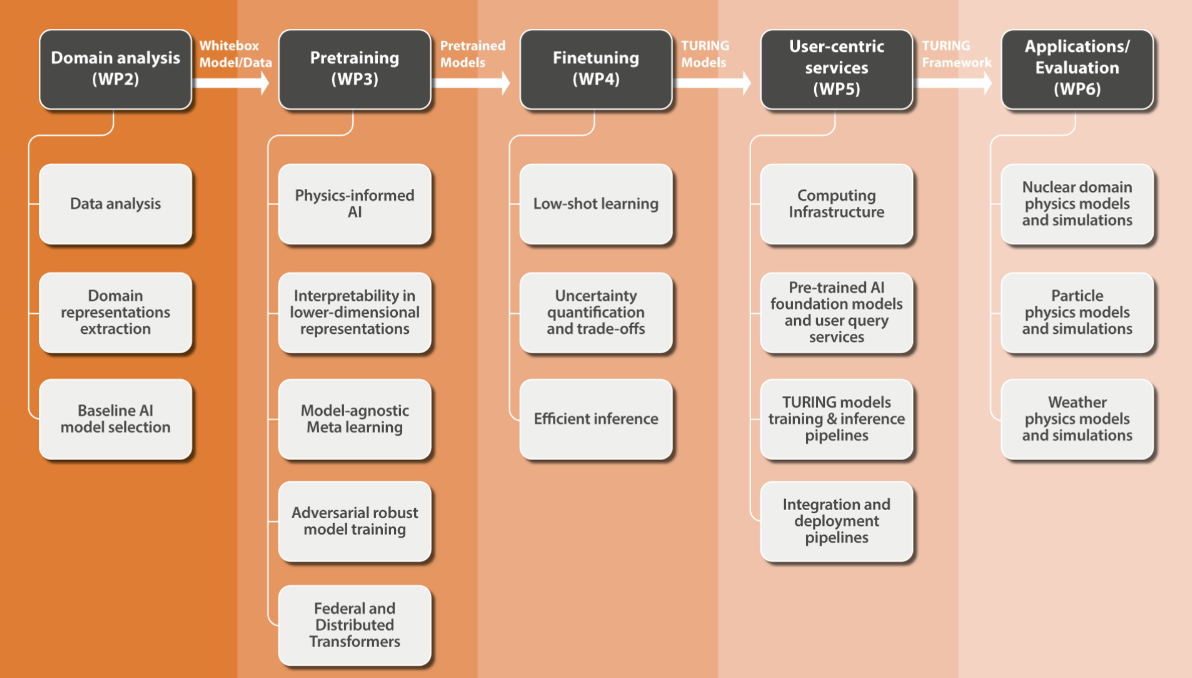Concept
The Concept of the TURING Project
TURING pioneers a new generation of trustworthy and physics-aware Artificial Intelligence capable of simulating complex physical systems more efficiently than traditional numerical models.
Its vision is to bridge artificial intelligence, physics, and engineering to develop foundation models that can understand, predict, and reproduce the dynamics of real-world physical phenomena.
Scientific Approach
TURING combines data-driven and physics-informed modelling to pre-train generative, multimodal foundation models that integrate physical laws with experimental data.
These models can generalize across multiple domains and, once fine-tuned, deliver high accuracy, robustness, and interpretability for specific scientific and engineering applications.
The research follows a stepwise process — starting with simpler systems, validating model robustness, and gradually scaling up to more complex physical interactions.
TURING models

Methodology summary

Innovation and Methodology
TURING’s interdisciplinary research approach merges computational sciences, machine learning, and physics, introducing several key innovations:
- Meta-learning and transformer architectures for physical systems and PDEs.
- Hybrid AI-based solvers combining numerical and data-driven methods.
- Low-dimensional representations of complex dynamics.
- Few-shot learning, uncertainty quantification, and adversarial robustness techniques.
- Federated and scalable architectures for foundation models.
The outcome is a new class of TURING models—AI systems capable of capturing physical properties of complex systems while maintaining robustness under varying conditions.
Objectives
- Leverage numerical methods and AI to create physically consistent models of complex phenomena.
- Advance generalization capabilities while maintaining robustness and reliability.
- Develop a Unified Physics-Aware Generative AI Framework focusing on computational efficiency and usability.
- Validate and refine TURING models through high-impact experiments in nuclear energy, high-energy physics, and meteorology.
- Maximize impact through dissemination, communication, standardization, and alignment with EU innovation and regulatory frameworks.
